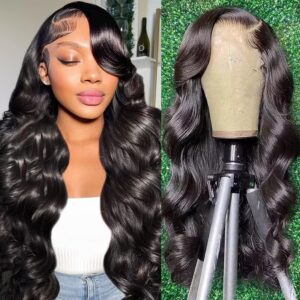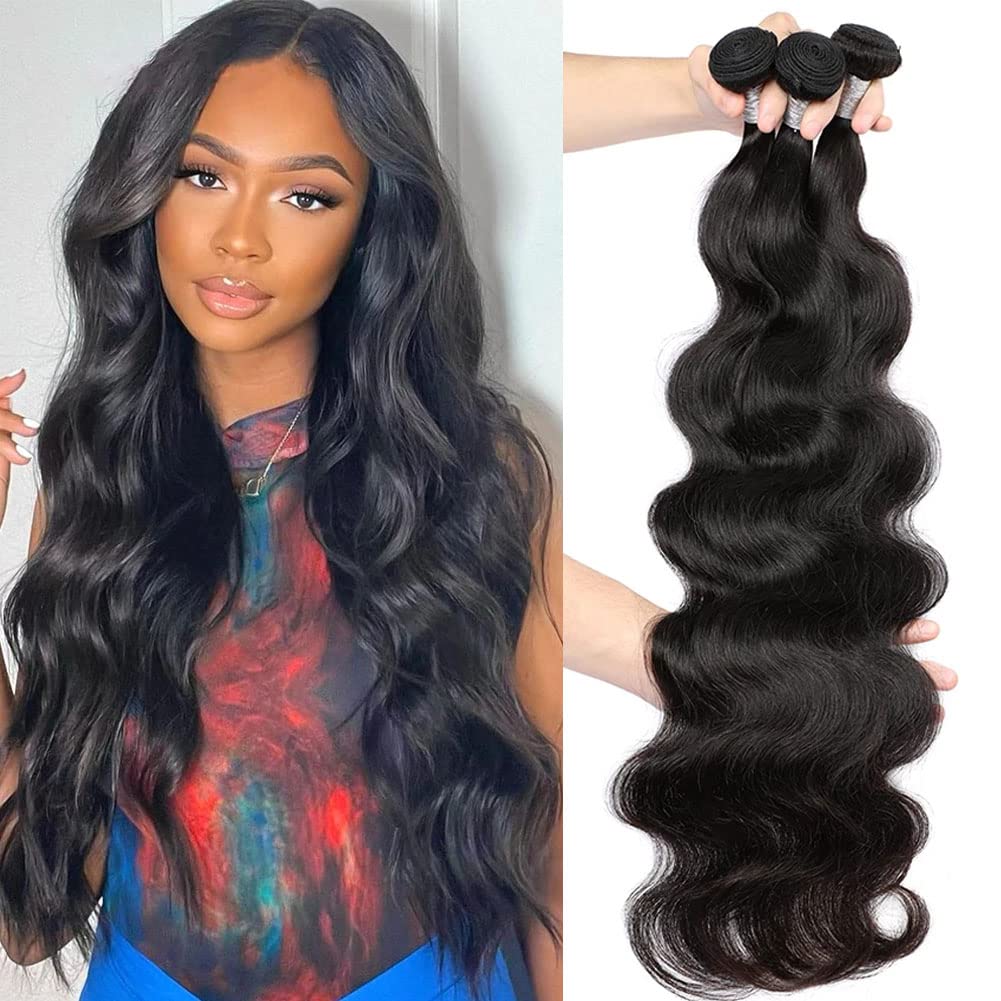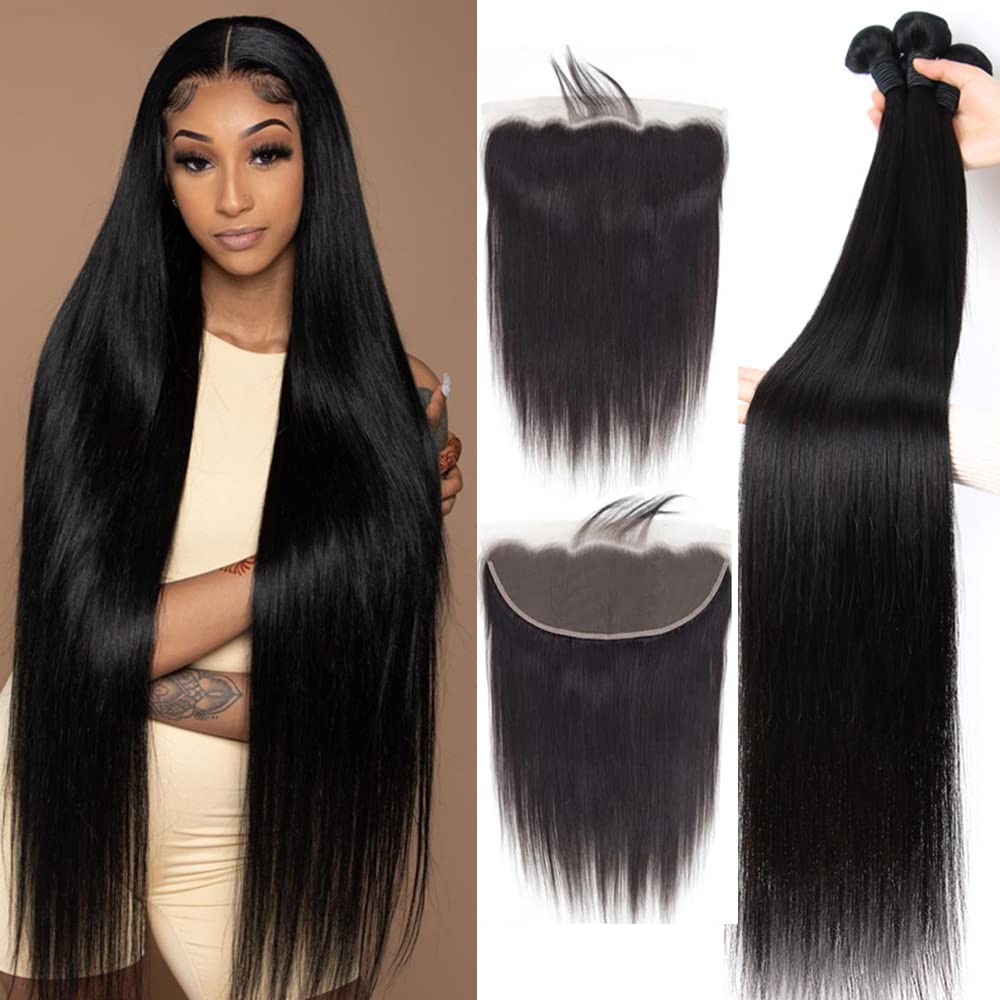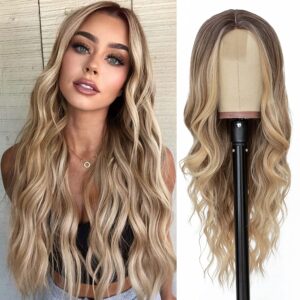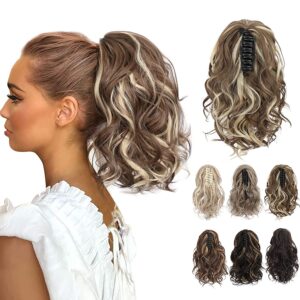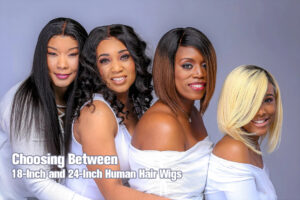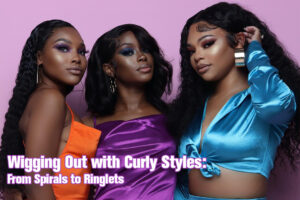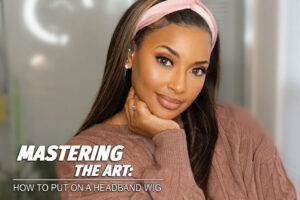Why Wear a Wig?
Fashion and Style
One of the most popular reasons for wearing a wig is to experiment with different looks and styles. Wigs provide the opportunity to transform your appearance without committing to a permanent change. Whether you’re aiming for long, flowing locks, a chic bob, or vibrant, colorful hair, wigs offer a quick and reversible fashion solution.
Hair Loss and Medical Reasons
For those facing hair loss due to medical conditions, such as chemotherapy, alopecia, or other health-related factors, wigs can be a lifeline. They provide a way to regain confidence and feel like yourself again. Wigs offer comfort and natural aesthetics during a challenging time, making them an invaluable resource for many.
Protective Styling
Wearing a wig can serve as a protective measure for your natural hair. It shields your hair from environmental damage and over-manipulation, promoting hair growth and overall hair health. Many people use wigs as a way to give their natural hair a break from constant styling.
Types of Wigs

Synthetic Wigs
Advantages:
1. Affordability: Synthetic wigs are generally more budget-friendly than their natural hair counterparts, making them an accessible option for various budgets.
2. Low Maintenance: These wigs maintain their original style, eliminating the need for additional styling. This low-maintenance feature is convenient for those seeking a hassle-free hair solution.
3. Color Variety: Synthetic wigs come in a diverse array of colors and styles. This variety allows wearers to experiment with different looks without committing to a permanent change.
Disadvantages:
1. Durability: Synthetic wigs have a shorter lifespan compared to natural hair wigs. The synthetic fibers can wear out over time, affecting the overall quality and appearance of the wig.
2. Heat Sensitivity: These wigs are sensitive to high temperatures. Exposure to heat styling tools like curling irons or straighteners can damage the synthetic fibers, limiting styling options.
3. Limited Styling: While synthetic wigs maintain their original style well, they offer limited styling options. Users may find it challenging to change the wig’s look or experiment with different hairstyles compared to natural hair wigs.
Human Hair Wigs
Advantages:
1. Natural Look and Feel: Human hair wigs closely resemble real hair, providing a natural and authentic appearance. The texture and movement of these wigs contribute to a realistic look and feel.
2. Styling Versatility: One of the significant advantages of human hair wigs is their versatility in styling. Similar to natural hair, you can cut, style, and color them according to your preferences, allowing for a wide range of looks and personalization.
3. Longevity: With proper care, human hair wigs can have a longer lifespan compared to synthetic wigs. Regular maintenance and attention contribute to their durability, making them a lasting investment.
Disadvantages:
1. Cost: The main drawback of human hair wigs is their higher cost compared to synthetic alternatives. The quality and authenticity of real hair contribute to the elevated price point.
2. Maintenance: Human hair wigs require more maintenance than synthetic ones. Regular styling, washing, and conditioning are essential to keep them in optimal condition. The higher maintenance demands may be a consideration for those with a busier lifestyle.
3. Weather Sensitivity: Similar to natural hair, human hair wigs can be affected by weather conditions. Humidity, rain, or extreme temperatures may impact the texture and style of the wig, requiring additional care and attention in variable climates.
Lace Front Wigs
Advantages:
1. Realistic Hairline: The lace front of these wigs mimics a natural hairline, creating a seamless and realistic appearance. The subtle transition from wig to skin enhances the overall look.
2. Versatility: Lace front wigs offer versatility in styling. You can part the wig in different directions, providing flexibility in choosing a hairstyle that complements your face shape and personal style.
3. Breathability: The lace construction of the wig allows your scalp to breathe, promoting airflow and reducing discomfort. This breathability adds to the overall comfort, especially during extended wear.
Disadvantages:
1. Price: One of the main drawbacks of lace front wigs is their higher price compared to other wig types. The intricacy of the lace front design contributes to the increased cost.
2. Limited Updos: Styling updos with lace front wigs can be challenging due to the nature of the lace front. While they offer excellent natural-looking hairlines, the frontal lace may limit the options for certain updo styles.
Full Lace Wigs
Advantages:
1. Natural Look: Full lace wigs provide a realistic appearance all over, mimicking the natural flow and movement of real hair. The construction allows for a seamless blend with your scalp.
2. Styling Freedom: Offering versatility, full lace wigs allow you to part and style the hair in any direction. This freedom in styling ensures that you can achieve a look that suits your preferences and complements your face shape.
3. Comfort: Full lace wigs are designed for comfort during extended wear. The breathable nature of the lace cap promotes airflow, preventing discomfort often associated with prolonged use.
Disadvantages:
1. Higher Cost: One of the drawbacks of full lace wigs is their higher cost compared to other wig types. The intricate lace construction contributes to the overall pricing of these wigs.
2. Skill Needed: Proper application of full lace wigs may require some expertise. Achieving a natural look involves skill in applying and securing the wig, which may be a learning curve for some users.
3. Delicate Lace: The lace used in full lace wigs can be fragile and requires careful handling. Users need to be mindful of the delicate nature of the lace to prevent damage during application and removal.
Monofilament Wigs
Advantages:
1. Realistic Scalp: Monofilament wigs excel in providing a realistic scalp appearance. The monofilament cap construction mimics the look of a natural scalp, giving the illusion that the hair is growing directly from the scalp.
2. Comfort: These wigs prioritize comfort. The breathable cap, often made of monofilament material, allows air circulation, reducing heat and discomfort during extended wear.
3. Styling Flexibility: Monofilament wigs offer styling flexibility. The individual strands of hair are hand-tied onto the monofilament cap, allowing you to part the hair in any direction, giving you creative control over your hairstyle.
Disadvantages:
1. Higher Cost: One of the drawbacks of monofilament wigs is their higher cost. The intricacy of the monofilament cap construction contributes to the overall price of these wigs.
2. Delicate: The monofilament area of these wigs may be more susceptible to wear. Careful handling is required to avoid damage to the delicate monofilament material, ensuring the longevity of the wig.
Hand-Tied Wigs
Advantages:
1. Natural Movement: Hand-tied wigs boast natural movement as each hair strand is individually tied. This meticulous construction enhances the overall look by replicating the way natural hair moves.
2. Comfort: These wigs prioritize comfort. Being lightweight, they offer a comfortable wearing experience, making them suitable for extended periods without causing strain.
3. Breathability: Hand-tied wigs promote breathability. The method of individually tying the hair allows for better air circulation to the scalp, reducing heat and discomfort.
Disadvantages:
1. Cost: One drawback is the cost. The craftsmanship involved in hand-tying each hair strand contributes to a higher price point compared to machine-made wigs.
2. Durability: Hand-tied wigs may have a shorter lifespan compared to machine-made counterparts. The delicate nature of the hand-tied construction requires careful handling to maintain the wig’s longevity.
Finding Your Style
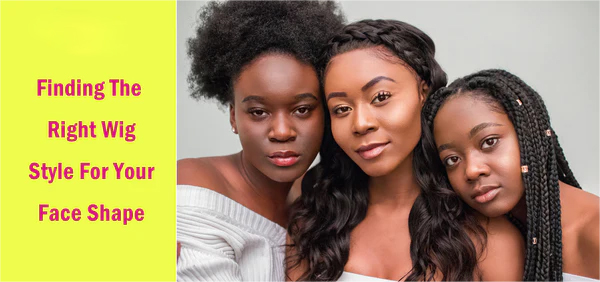
Consider Your Face Shape
Determine your face shape (round, oval, square, heart, etc.) to find a wig style that complements it. For example, those with a round face might opt for longer wigs to add some length, while those with an oval face can experiment with various styles.
Wig Length
1. Short Hair: Short wigs are low-maintenance and often give off a chic and youthful vibe. They can be great for active lifestyles and hot weather.
2. Medium Length: Medium-length wigs are versatile and can be styled in various ways. They offer a balance between short and long styles.
3. Long Hair: Long wigs exude elegance and glamour. They can be perfect for formal occasions and adding drama to your everyday look.
Choose the Right Color
1. Natural Shades: If you prefer a classic look, go for wigs in natural hair colors like black, brown, or blonde. These are versatile and suit most outfits.
2. Bold Colors: Want to make a statement? Experiment with vibrant and unconventional colors like red, purple, or silver for a unique and eye-catching style.
3. Highlights: Wigs with subtle highlights can add depth and dimension to your look, making it more dynamic and lively.
Hair Texture
1. Straight Hair: Straight wigs offer a sleek and polished appearance. They can be easily styled for a professional look or a night out.
2. Wavy Hair: Wavy wigs provide a more relaxed and natural look. They’re great for a beachy, carefree style.
3. Curly Hair: Curly wigs add a touch of romance and playfulness to your look. They’re ideal for special occasions or embracing your inner bohemian spirit.
Skin Tone and Eye Color
Consider your skin tone and eye color when choosing a wig color. Certain colors can enhance your natural features and make your wig look more harmonious with your overall appearance.
Wig Cap Construction
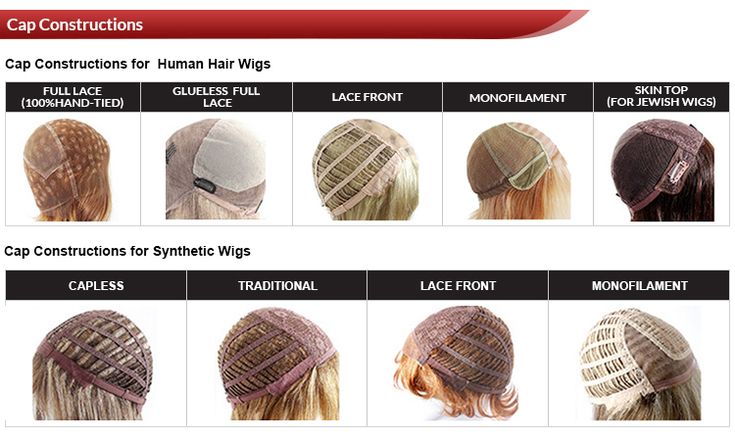
Machine-Made Cap
These caps are made by sewing hair wefts onto the cap in a uniform manner. They are typically the most affordable option.
1. Advantages: Machine-made caps are budget-friendly and provide adequate ventilation. They are a good choice for those looking for an economical wig.
2. Disadvantages: They may lack the natural look and feel of other cap types. Styling options can be limited.
Monofilament Cap
Monofilament caps have a sheer, breathable fabric at the crown where each hair is hand-tied. The rest of the cap may be machine-made.
1. Advantages: The monofilament area creates a realistic scalp appearance and allows for versatile parting. They offer a good balance between natural appearance and cost.
2. Disadvantages: They may be pricier than machine-made caps and can have limited styling options compared to fully hand-tied caps.
Hand-Tied Cap
Hand-tied caps are entirely hand-knotted, providing the most natural look. Each hair is individually tied to the cap.
1. Advantages: They offer the most natural look and styling flexibility. They are lightweight and extremely comfortable.
2. Disadvantages: Hand-tied caps are often the most expensive option. They may require more care and can be delicate.
Lace Front and Full Lace Caps
These caps feature a sheer lace front or a full lace base, allowing for a realistic hairline and versatile styling.
1. Advantages: Lace front and full lace caps provide a natural-looking hairline and the ability to style the hair away from the face.
2. Disadvantages: They are typically more expensive, and the delicate lace may require extra care.
Measuring Your Head Size for the Perfect Fit
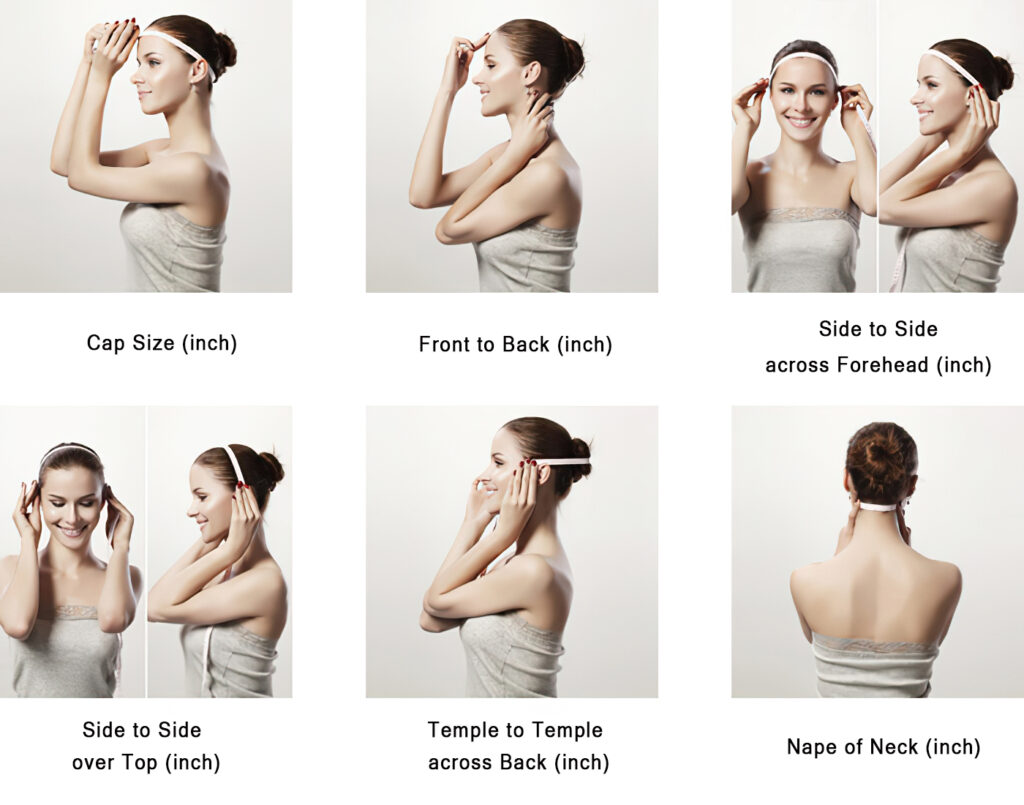
Use a Soft Measuring Tape
Begin by using a soft, flexible measuring tape. If you don’t have one, you can use a string and then measure it against a ruler.
Measure Circumference
Start by measuring the circumference of your head. Place the tape or string around your head, following your natural hairline. It should sit snugly but not too tight. Make sure it’s level all the way around.
Measure Front to Nape
To measure from your forehead’s natural hairline to the nape of your neck, place the tape or string at your hairline in the front, go over the crown of your head, and bring it down to the nape.
Ear-to-Ear Across Forehead
Measure from the front of one ear, across your forehead, to the front of the other ear. This gives you an idea of the width you’ll need for the wig.
Ear-to-Ear Over the Top
Measure from one ear over the top of your head to the other ear, following your natural hairline.
Adjusting Straps and Securing Your Wig:
Adjust the Straps
Most wigs have adjustable straps at the back. These can be tightened or loosened to achieve a snug fit. If your wig feels too loose, tighten the straps by hooking them to a tighter setting.
Putting on Your Wig
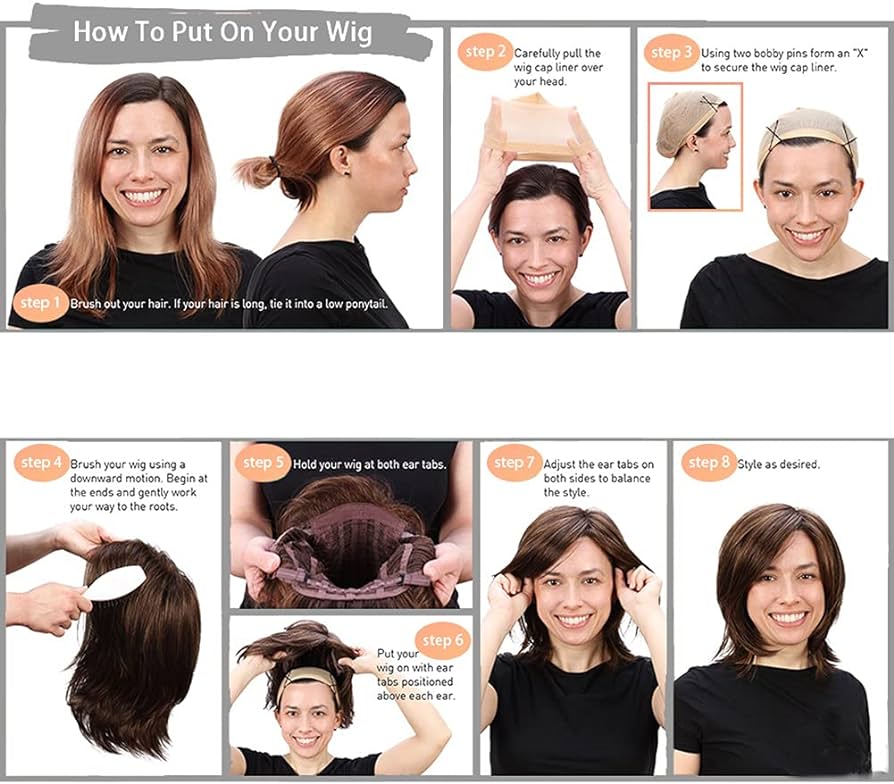
Step 1: Prepare Your Natural Hair
Before putting on your wig, make sure your natural hair is as flat and secure as possible. You can do this by braiding your hair or using a wig cap to keep it in place. Tuck any loose hair under the wig cap for a smooth foundation.
Step 2: Adjust the Straps
If your wig has adjustable straps, start by loosening them to their maximum size. This will make it easier to put the wig on. You can tighten them later for a snug fit.
Step 3: Position the Wig
Hold the wig by the back (nape) with the label at the back, and the front (forehead) with the hairline. Tilt your head slightly forward to allow room for the wig.
Step 4: Place the Wig on Your Head
Gently place the front of the wig on your forehead, aligning the hairline with your natural hairline. Slowly pull the wig over your head, letting it fall naturally. The ear tabs should be aligned with your ears.
Step 5: Secure the Combs and Clips
If your wig has combs or clips, start by securing the front comb or clip at your natural hairline. Gently slide it into your hair, being careful not to poke your scalp. Then, secure any additional combs or clips around the sides and back of your head.
Step 6: Adjust the Straps
Once the wig is in place, adjust the straps at the back to achieve a comfortable and secure fit. Tighten them gradually to ensure a snug hold, but not too tight to avoid discomfort.
Step 7: Check for Balance and Comfort
Ensure that the wig is balanced and even on your head. Make any necessary adjustments to ensure it feels comfortable and secure. It should sit naturally and not feel too tight or loose.
Step 8: Style Your Wig
Style the wig as desired using wig-friendly styling tools and products. You can use heat-resistant wigs to curl, straighten, or add volume. Gently comb or brush the wig to achieve your preferred look.
Step 9: Final Touches
Make any final adjustments to ensure the wig looks natural and feels comfortable. Ensure the front hairline aligns with your natural hairline for the most realistic appearance.
Frequently Asked Questions
Do Wigs Damage Natural Hair?
No, properly fitted and maintained wigs should not damage your natural hair. In fact, wigs can be protective styles that help preserve your hair by reducing exposure to heat and styling products.
Can I Style My Wig With Heat Tools?
It depends on the wig type. Human hair wigs can generally be styled with heat tools, but synthetic wigs cannot handle high heat. Always check the care instructions that come with your wig.
How Often Should I Wash My Wig?
The frequency of washing depends on how often you wear the wig and your personal preference. In general, washing every 10-15 wears is a good guideline.
Can I Swim with a Wig On?
You can swim with a wig, but it’s essential to protect it from chlorine and saltwater. Wear a swim cap to keep the wig dry, and rinse it thoroughly after swimming.
Can I Sleep with My Wig On?
While it’s possible, it’s not recommended to sleep with your wig on regularly. The friction and movement during sleep can cause tangling and matting. It’s better to remove your wig before bedtime.
Can I Wear a Wig During Physical Activities or Exercise?
Yes, wigs can be worn during exercise. Make sure your wig is secured properly with combs, clips, or a wig grip to avoid shifting during physical activities.
Can I Cut or Trim My Wig to Change the Style?
Yes, you can cut or trim your wig to change the style, but it’s recommended to have this done by a professional hairstylist for the best results.

